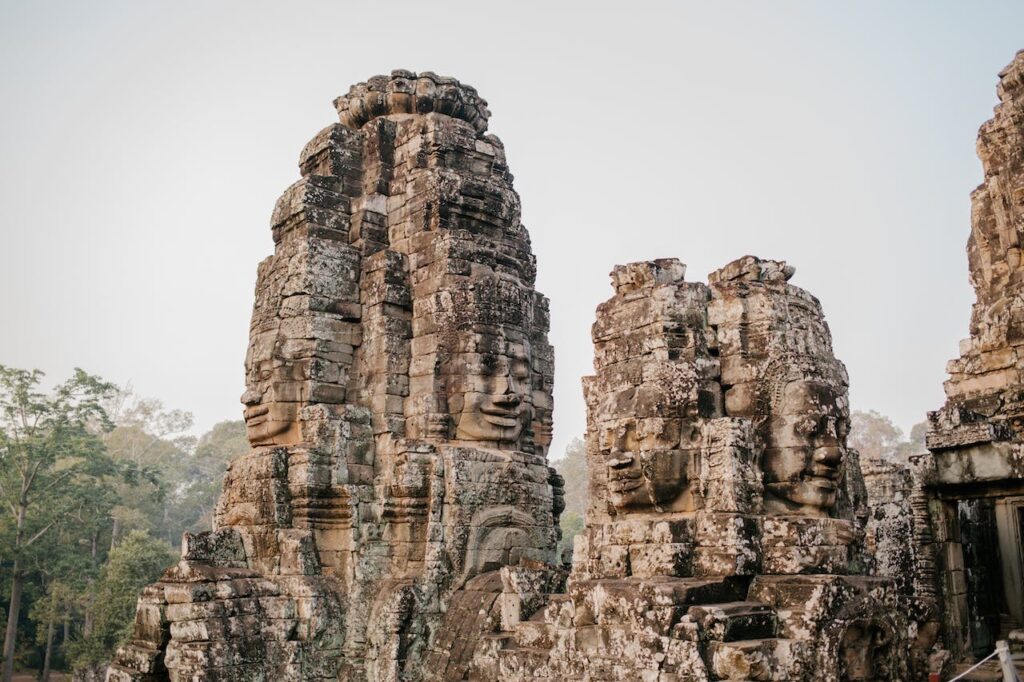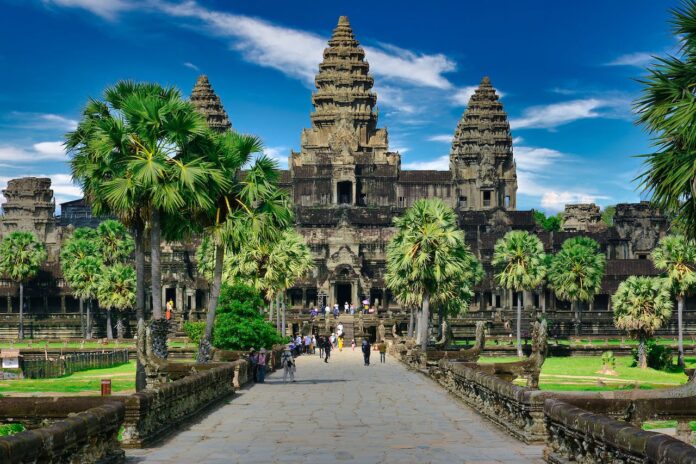In the heart of Cambodia lies a testament to the grandeur of the Khmer Empire – Angkor Wat, the jewel of Southeast Asia. This ancient temple city, nestled amidst lush jungles, is a captivating blend of spirituality, architectural brilliance, and historical significance. As we embark on a journey back in time, we will unravel the mysteries and marvels of Angkor Wat, a monument that stands as a silent witness to the zenith of the Khmer civilization.
Page Contents
The Rise of the Khmer Empire
To truly appreciate Angkor Wat, one must first understand the context of its creation. The Khmer Empire, which thrived from the 9th to the 15th centuries, was a powerful Southeast Asian civilization that held sway over much of present-day Cambodia, Thailand, Laos, and Vietnam. At the height of its glory, the Khmer Empire was a beacon of culture, trade, and innovation.
Under the rule of King Suryavarman II in the early 12th century, the Khmer Empire reached its pinnacle. It was during his reign that the foundations of Angkor Wat were laid, a project that would transcend time and become an enduring symbol of Khmer ingenuity.
Read Also : The Acropolis of Athens: Ancient Greek Architectural Brilliance

Architectural Marvels: A Symphony of Stones
Angkor Wat is not just a temple; it is a sprawling complex covering an area of approximately 400 acres. The sheer scale of the monument is awe-inspiring, with its intricate carvings, towering spires, and expansive courtyards. The architecture of Angkor Wat is a testament to the Khmer people’s advanced understanding of engineering and aesthetics.
The temple is designed as a microcosm of the Hindu universe, with its central tower representing the mythical Mount Meru. The intricate bas-reliefs that adorn the walls tell the stories of Hindu epics like the Ramayana and the Mahabharata. These carvings, executed with astonishing detail, not only serve as a visual feast but also provide valuable insights into the cultural and religious beliefs of the Khmer people.
What sets Angkor Wat apart is its harmonious blend of symbolism and functionality. The intricate layout of the temple aligns with astronomical principles, a testament to the Khmer Empire’s advanced knowledge of celestial bodies. The precision with which Angkor Wat was constructed reflects a deep understanding of both religious symbolism and practical design.

Sacred Grounds: The Spiritual Heart of Angkor Wat
Beyond its architectural brilliance, Angkor Wat served as a center of religious worship. Originally dedicated to the Hindu god Vishnu, the temple later transformed into a Buddhist shrine as the Khmer Empire underwent a religious shift. This duality is evident in the temple’s iconography, where Hindu and Buddhist elements coexist seamlessly.
The spiritual ambiance of Angkor Wat is palpable as one explores its sacred grounds. The central sanctuary, surrounded by galleries and intricate passageways, creates an immersive experience for pilgrims and visitors alike. The aura of divinity that permeates the temple city adds another layer of mystique to its already enchanting allure.
The Decline and Rediscovery of Angkor Wat
As with many great civilizations, the Khmer Empire eventually faced a decline. Factors such as environmental changes, political instability, and shifts in trade routes contributed to the waning of Khmer power. By the 15th century, Angkor Wat was abandoned and gradually engulfed by the encroaching jungle.
For centuries, Angkor Wat remained hidden, known only to local inhabitants who regarded it as a sacred but largely forgotten site. It wasn’t until the 19th century that the temple city captured the attention of the Western world. French explorers, enchanted by tales of a lost city deep in the Cambodian jungle, embarked on expeditions to uncover the mysteries of Angkor Wat.
The moment of rediscovery marked a turning point in the history of Angkor Wat. Archaeologists, historians, and conservationists flocked to the site, eager to unveil its secrets and preserve its cultural legacy. The meticulous restoration efforts that followed have allowed Angkor Wat to emerge from the clutches of nature, once again standing proud as a testament to human achievement.

Preserving the Past: Challenges and Triumphs
While the rediscovery of Angkor Wat was a triumph for historians and archaeologists, preserving the temple city presents an ongoing challenge. The tropical climate, combined with the sheer size of the complex, poses a constant threat to the integrity of the structures. Conservation efforts are a delicate balance between maintaining the authenticity of the site and preventing further decay.
International collaboration has played a crucial role in the preservation of Angkor Wat. UNESCO recognized the cultural significance of the temple city and designated it as a World Heritage Site in 1992. This designation not only brought global attention to the need for conservation but also facilitated the allocation of funds and expertise to safeguard Angkor Wat for future generations.
The Enduring Legacy of Angkor Wat
As we marvel at the splendor of Angkor Wat, it is essential to reflect on its enduring legacy. Beyond the tangible beauty of the temple city, Angkor Wat symbolizes the resilience of human achievement in the face of adversity. From its inception as a grand testament to Khmer power to its abandonment and eventual rediscovery, Angkor Wat stands as a poignant reminder of the ebb and flow of civilizations.
Angkor Wat’s legacy extends beyond the borders of Cambodia; it is a shared heritage that transcends cultural and geographical boundaries. The temple city serves as a bridge between the past and the present, inviting visitors to connect with the rich tapestry of human history and appreciate the remarkable feats of our ancestors.

Read also : The Roman Colosseum: An Icon of Ancient Grandeur and Enduring Legacy
Conclusion
In the heart of the Cambodian jungle, Angkor Wat stands as a silent witness to the rise and fall of the Khmer Empire. Its intricate carvings, towering spires, and sprawling complex tell the story of a civilization that reached unparalleled heights of cultural and architectural brilliance. As we explore the sacred grounds of Angkor Wat, we are transported back in time, guided by the whispers of ancient stories and the echoes of a bygone era.
Angkor Wat is not merely a historical relic; it is a living testament to the indomitable spirit of human creativity and perseverance. From the intricacies of its carvings to the grandeur of its architecture, Angkor Wat invites us to ponder the mysteries of the past and contemplate the inexorable passage of time. As we stand in awe of this timeless marvel, we are reminded that, like Angkor Wat, the legacy of great civilizations endures, leaving an indelible mark on the tapestry of human history.


